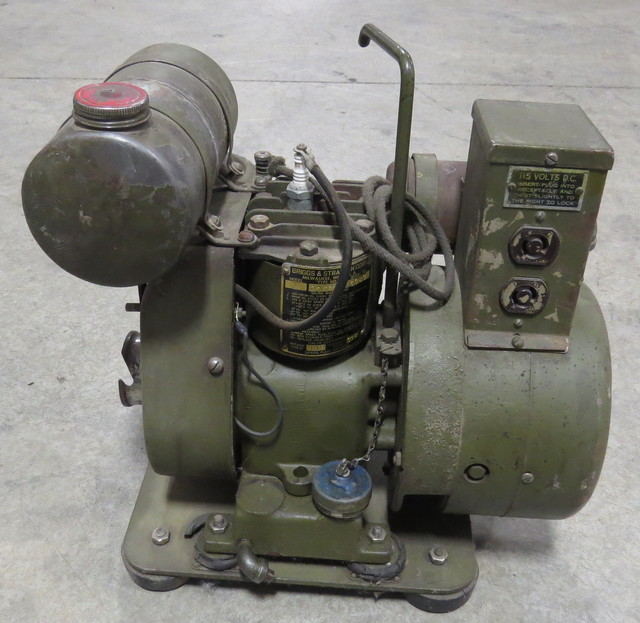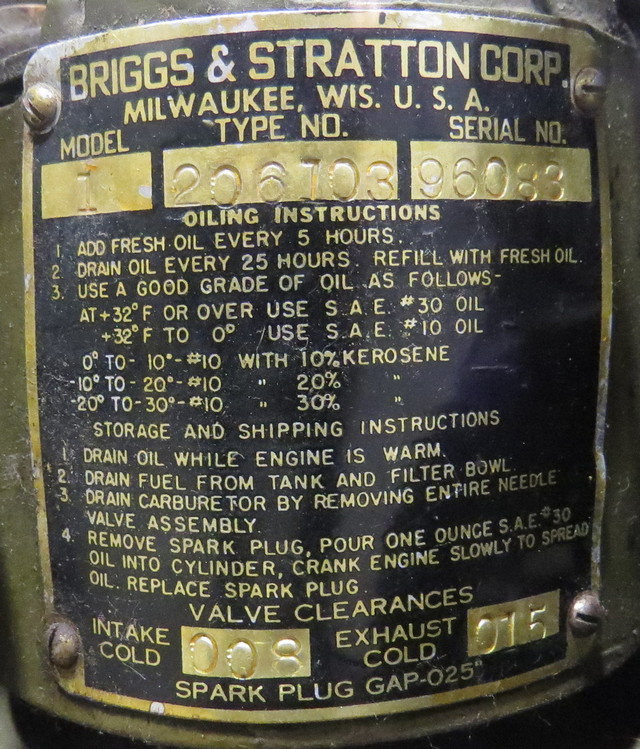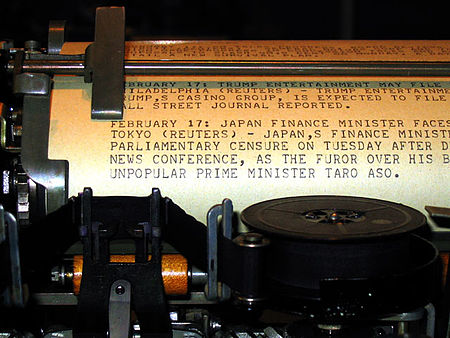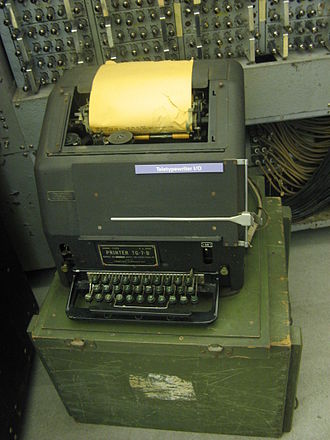Power Unit PE-77-D
EE-97-A
Teletypewriter set
Major components:
Teletypewriter TG-7-B
Rectifier RA-87
Line Unit BE-77
Ground Rod GP-29
Power Unit PE-77-D


sites.google.com - Briggs & Stratton PE-77-D
Briggs & Stratton Model I Engine
| First Run: | 1930 | |
|---|---|---|
| General Characteristics | ||
| Type: | One cylinder air-cooled radial | |
| Bore: | 2 in | |
| Stroke: | 1.5 in | |
| Length: | 20 in | |
| Width: | 19 in | |
| Height: | 44 in | |
| Weight: | 72 lb | |
| Components | ||
| Intake Valve: | Alloy Steel | |
| Exhaust Valve: | Silchrome Steel | |
| Operating Speed: | 2,650 rpm | |
| Fuel type: | Gasoline | |
| Fuel tank capacity: | 0.5 Gallon | |
| Fuel consumption: | 0.2 Gallon per hour (rated load) | |
| Oil system: | pump and splash | |
| Crankcase Oil capacity: | 0.75 qt | |
| Cooling system: | Air-cooled | |
| Air Cleaner: | Oil bath type | |
| Starter: | Manual (rope) | |
| Governor: | Flyball | |
Briggs & Stratton Model I Manual
Pioneer Gen-E-Motor
| Make: | Pioneer Gen-E-Motor | |
|---|---|---|
| Model: | 77 | |
| Type of Generator: | DC | |
| Rating: | .25 kw (250 w), 115 v, 2.2 amp | |
| Wires: | 2 | |
| Operating Speed: | 2,650 rpm | |
| Drive: | Direct | |
Teletypewriter TG-7-B
The Teletypewriter Model TG-7-B is the military model number for the Teletype Model 15
Wikipedia - Teletype Corporation
Teletype Model 15 (1930)
The Teletype Model 15 is a Baudot code page printer; the mainstay of U.S. military communications in World War II.
A reliable, heavy-duty machine with a cast frame. In 1930, Sterling Morton, Howard L. Krum, and Edward E. Kleinschmidt filed an application for a U.S. patent covering the commercial form of the Model 15 page printer. Approximately 200,000 Model 15 teleprinters were built. The Model 15 stands out as one of a few machines that remained in production for many years, remaining in production until 1963, a total of 33 years of continuous production. The production run was stretched somewhat by World War II — the Model 28 was scheduled to replace the Model 15 in the mid-1940s, but Teletype built so many factories to produce the Model 15 during World War II that it was more economical to continue mass production of the Model 15. The Model 15, in its "receive only" configuration with no keyboard, was the classic "news Teletype" until the 1950s, when the news wire services began to move to TeleTypeSetter feeds. Some radio stations still use a recording of the sound of one of these machines as background during news broadcasts.

